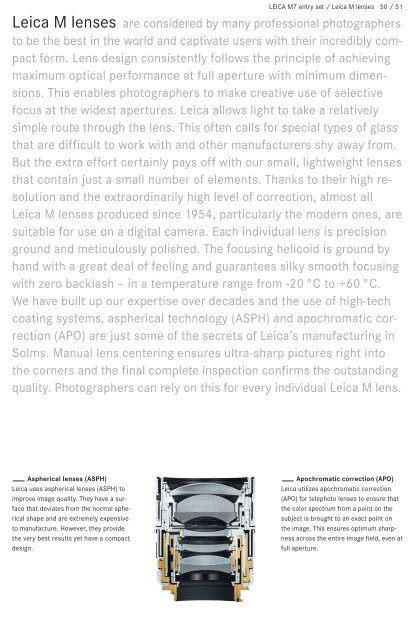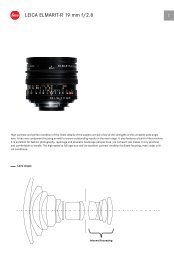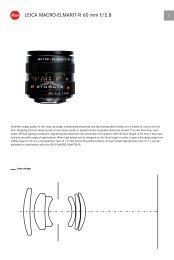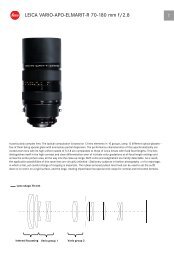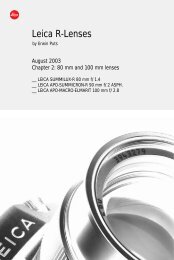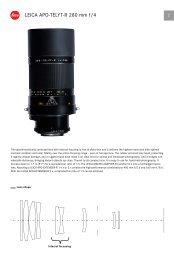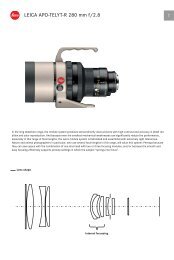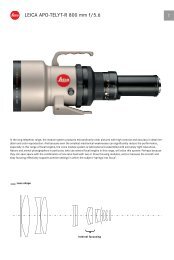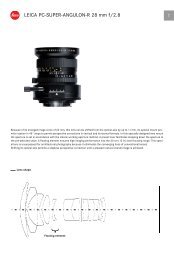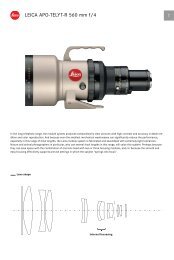Leica M System
Leica M System
Leica M System
Create successful ePaper yourself
Turn your PDF publications into a flip-book with our unique Google optimized e-Paper software.
LEICA M7 entry set / <strong>Leica</strong> M lenses 50 / 51<br />
<strong>Leica</strong> M lenses are considered by many professional photographers<br />
to be the best in the world and captivate users with their incredibly compact<br />
form. Lens design consistently follows the principle of achieving<br />
maximum optical performance at full aperture with minimum dimensions.<br />
This enables photographers to make creative use of selective<br />
focus at the widest apertures. <strong>Leica</strong> allows light to take a relatively<br />
simple route through the lens. This often calls for special types of glass<br />
that are difficult to work with and other manufacturers shy away from.<br />
But the extra effort certainly pays off with our small, lightweight lenses<br />
that contain just a small number of elements. Thanks to their high resolution<br />
and the extraordinarily high level of correction, almost all<br />
<strong>Leica</strong> M lenses produced since 1954, particularly the modern ones, are<br />
suitable for use on a digital camera. Each individual lens is precision<br />
ground and meticulously polished. The focusing helicoid is ground by<br />
hand with a great deal of feeling and guarantees silky smooth focusing<br />
with zero backlash – in a temperature range from -20 °C to +60 °C.<br />
We have built up our expertise over decades and the use of high-tech<br />
coating systems, aspherical technology (ASPH) and apochromatic correction<br />
(APO) are just some of the secrets of <strong>Leica</strong>’s manufacturing in<br />
Solms. Manual lens centering ensures ultra-sharp pictures right into<br />
the corners and the final complete inspection confirms the outstanding<br />
quality. Photographers can rely on this for every individual <strong>Leica</strong> M lens.<br />
Aspherical lenses (ASPH)<br />
<strong>Leica</strong> uses aspherical lenses (ASPH) to<br />
improve image quality. They have a surface<br />
that deviates from the normal spherical<br />
shape and are extremely expensive<br />
to manufacture. However, they provide<br />
the very best results yet have a compact<br />
design.<br />
Apochromatic correction (APO)<br />
<strong>Leica</strong> utilizes apochromatic correction<br />
(APO) for telephoto lenses to ensure that<br />
the color spectrum from a point on the<br />
subject is brought to an exact point on<br />
the image. This ensures optimum sharpness<br />
across the entire image field, even at<br />
full aperture.


